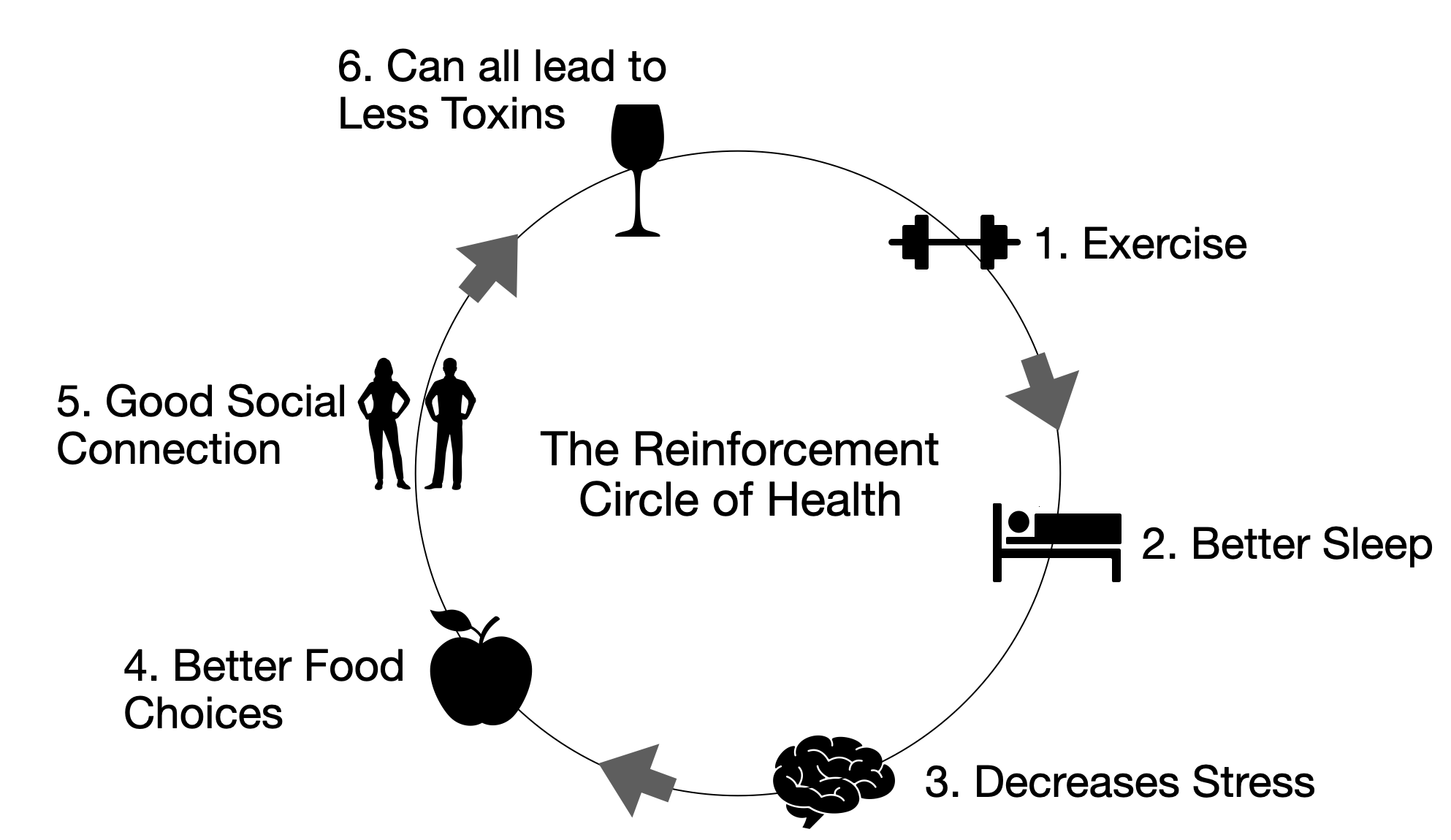The 6 Pillars of a Healthy Life
Ten years ago I remember thinking "Is this the best I can do?"
Prescribing a pill and sending him out into the world again? Maybe if I say "You should exercise more" he'll do it. I smiled weakly because I knew only 10% of my patients would follow that direction. Even then they would exercise just a few short months and then quit. But in those few minutes of the visit, I printed out a recommendation on body weight exercises at home. He left, only changed by his new diagnosis of Type II Diabetes.
I felt slightly defeated. His diabetes should improve on Metformin yet, his overall health would likely remain the same. I talked to my nurse about it and she said "Oh you know, he might or might not get it." Even my director at the time said sometimes we can only hope for the best and see them when they return.
But seriously, how could I do this better?
How could I cause real and significant change that the public looks at me to do? Seriously I'm a Doctor dammit.
I should be able to reach the foundations of health and craft a well-thought-out plan to reverse his diabetes. Yet at most, I knew how to prescribe a medication and refer him for the recommended eye exam. This cognitive dissonance stuck with me all through residency and into my first job as a practicing physician.
The world requires something better.
I started searching.
"How to make someone motivated?"
"What are the top healthy habits a person can do?"
"Do genetics influence motivation?"
"Are lifestyle habits more effective than medications?"
This caused me actually to reflect on my own life and habits. I had learned a lot about exercise: gymnastics as a kid, marathons, 5x5 WeightLifting, and CrossFit were all programs I had gone through. Yet the literature talked about sleep, nutrition, and so much more.
Then I discovered the American College of Lifestyle Medicine (ACLM).
Evidence-based education, practice resources and a network of colleages that support the terapeutic use of lifestyle change as the foundation of health care. - ACLM
In other words, let's get people to change their habits to reverse their chronic diseases. Why?
Eight risky lifestyle behaviors drive the top fifteen health conditions in the world. These make up 80% of the visits, hospitalizations, and costs.
A study in JAMA showed that Dietary Risk is the leading cause of Death and Disability. Plus only 3% of the American population follow a healthy lifestyle.
- Getting 150 minutes of Moderate exercise per Week.
- A Diet Score in the Top 40% on the Healthy Eating Index.
- A Body Fat percentage is under 20% for men and 30% for women.
- Not Smoking
With the above data, we must address and fix the 6 pillars of health.

As many people have found out, there is a synergy amongst these pillars. In other words, not getting good sleep leads to eating poorly and increasing stress, which in turn leads to worse sleep. So addressing nutrition, exercise, substance use, and stress management at the same time is very beneficial to achieving good outcomes.
However, because of its ubiquity and straightforward application, exercise is the easiest place to start. A lot of research now shows that it affects multiple other domains with an almost overriding effect. In other words, lifting and putting down a dumbbell can override the effects of some sleep deprivation, and negative emotions, and start to be connected with better food choices.

The goal of lifestyle medicine is not soley treatment but health restoration and disease remission achieved by focusing on interventions on the root cause of disease.
- Dr. Cate Collings, MD (Former President of the ACLM)
Significant cost savings can also be had with lifestyle interventions. Patients with Diabetes taken to remission can expect to save $9600 and have a projected 25-year cost savings of $240,000.
A Different Kind of Visit
In addition to preventive care and chronic disease management, Lifestyle Medicine is now part of my ongoing medical training. My goal is to launch a lifestyle medicine clinic at the beginning of next year.
How is a lifestyle medicine visit different from your traditional doctor?

For starters, your visits are usually longer as well. Instead of the 15 minutes, you get 60 minutes. During the group visits you also see everyone else who might be suffering from the same type of problem, which will shift your mentality from a victim to "Hey, this is a supportive group of people who can help me get through this problem."
Better than a Pill
A single pill like a calcium channel blocker for hypertension affects mostly just the blood pressure. However, strength training affects multiple areas including blood pressure, insulin resistance, osteoporosis, dementia, and even anxiety and depression. You've moved from the edge of the spoke on the wheel to the center of the wheel.

If you tried to replace these diseases with pills you would be taking anywhere from 4 to 10 pills. The same goes for all the other 5 pillars. You fix sleep then you decrease dementia and obesity. If you fix social connections then you can reduce depression and stress. The list goes on and on. My patients practice more and more of these good habits their ability to come off of medications increases. Decreasing their monthly costs and providing a level of independence they never thought they would regain.
The time is now to fix medicine. We cannot wait, and for those of you who are doctors, I highly encourage you to check out the American College of Lifestyle Medicine. If you are an individual looking for that extra help to come off of medications, then you can search for Lifestyle Medicine physicians HERE.


